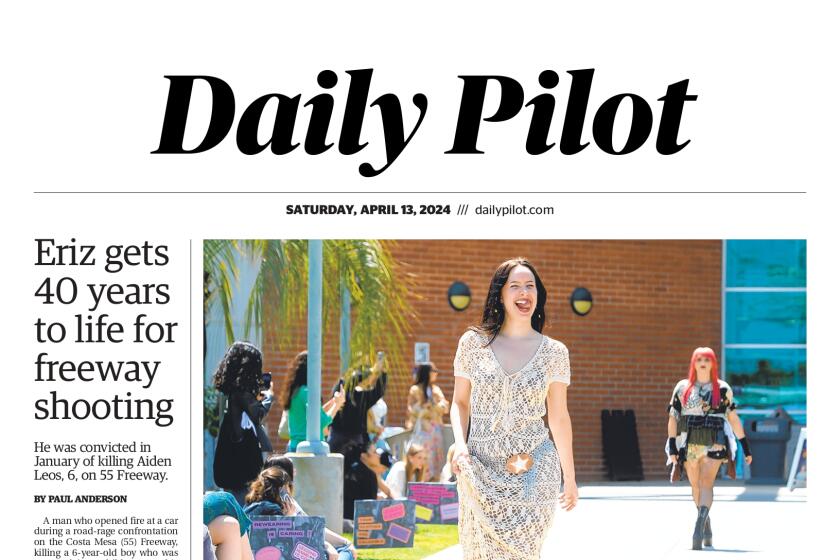Costa Mesa Sanitary District adopts map for 5 voting districts for board elections
Costa Mesa Sanitary District board members unanimously adopted a plan Thursday to divide the agency into voting districts for board elections.
The chosen map — referred to in board documents as Plan E, Revision 1 — splits the district into five sections with populations ranging from 22,728 to 23,552. Beginning in 2020, residents in each region will choose one board candidate from that area to represent them.
This November’s election — when three seats on the five-member board will be up for grabs — will be the last using the current at-large voting system, in which residents throughout the district can vote for anyone running for the board, regardless of where they live.
The sanitary district provides sewer and curbside trash collection services to about 116,700 ratepayers in Costa Mesa, parts of Newport Beach and unincorporated sections of Orange County.
Board members selected their preferred map from a lineup of seven publicly submitted options. That configuration, they said, would keep the voting districts’ populations largely even and avoid splitting neighborhoods to the extent possible.
“It just seemed like it balanced out and people would be happier with it,” said board member Arlene Schafer.
Like many other agencies throughout the county and state, the sanitary district was threatened with a lawsuit if it didn’t change its election method.
Attorney Kevin Shenkman sent a letter to the sanitary district in March alleging that its at-large voting system “dilutes the ability of Latinos … to elect candidates of their choice or otherwise influence the outcome of the district’s board elections” and therefore violates the California Voting Rights Act of 2001.
He and his law firm, Malibu-based Shenkman & Hughes, have threatened or filed such lawsuits against governing agencies throughout Southern California in recent years, including the city of Costa Mesa, the Newport-Mesa Unified School District and the Coast Community College District, all of which eventually agreed to move from at-large voting to district-based elections.
The sanitary district’s selected map carves out one area, District 4, where a majority of the residents are Latino and another, District 3, where that group makes up a plurality of the population.
Since receiving Shenkman’s letter, the district’s board and citizens advisory committee have held five public hearings to collect input on the change in election method and solicit proposals for how to draw the new voting district boundaries.
Still, some board members said they wished they could have spent more time studying the issue rather than having to rush to respond to potential litigation.
“This should have been a process that took six months or longer,” said board President Mike Scheafer. “We’re all under the gun with this thing and that’s just not fair, as far as I’m concerned.”
Twitter @LukeMMoney
All the latest on Orange County from Orange County.
Get our free TimesOC newsletter.
You may occasionally receive promotional content from the Daily Pilot.




